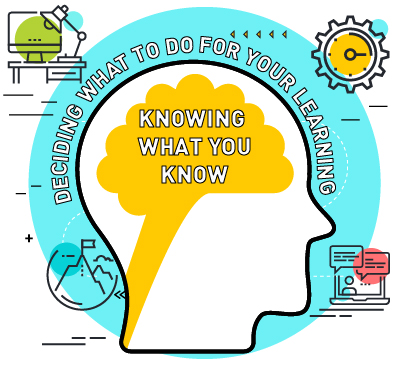Metacognition

Metacognition is thinking about your own thinking and it has two parts:
- Knowing what you know
- Deciding what to do for your learning
The next two activities will help you identify what you know and what to do about your learning and how to schedule your time.
At this early stage in the course, you’ll use [link to ACTIVITY 6] to identify how well you know the prerequisite knowledge and skills for this course. The activity will also ask you about your study strategies and to decide what you will do for your learning, including resources that can help you achieve your goals. The most successful students will seek help to achieve their goals.
Let’s check back in with the students from the start

The students we met at the start of the module thought that just reading over their notes before an exam really worked for them, but they still weren’t reaching their course goals. They started trying out a new study strategy—testing themselves and each other throughout the semester. They found their performance improved, they could more easily remember the things they needed to know for the exam without cramming, and their grades increased.
Planning your time

Watch Shaina schedule her semester.
You can use whatever technology you wish to do this, such as the calendar on your phone, a spreadsheet, software such as Asana, scheduling software, paper (!), etc.
Instead of an in-module activity, take some time to plan your semester NOW and put your schedule somewhere that you’ll see or notice it frequently.
Metacognition requires you to think about your own thinking and is separated into two parts - knowing what you know and deciding what to do for your learning. This skill is essential for identifying how well you know the prerequisite knowledge, developing study strategies, and learning how to schedule your time.

